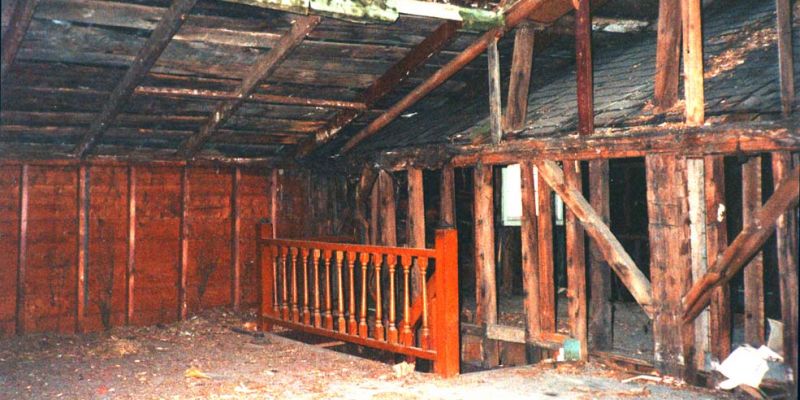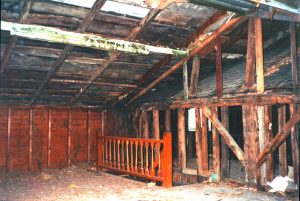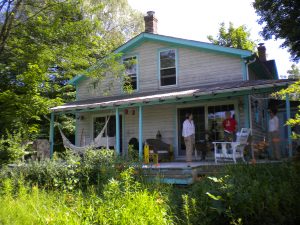
As 1979 turned into 1980 the stars aligned themselves and I woke up needing to look at The New York Times Farm and Country Real Estate Section. My daughter had turned two and it was time to add some nature to her life.
Being an immigrant I really had a good sense of Manhattan, but the rest of the state map was an unknown. Still, as I perused The Times two ads stood out immediately. The first read: Handyman special with one acre. The second: Handyman special with 60 acres. The price was the same. I had no idea what constituted an acre but 60 acres sounded much better. (I now know that was about the size of half a village in the Alps!) My European friends were in shocked awe while my American friends told me that 60 acres was just an American front yard — in the Seventies and Eighties there was an abundance of space that few people seemed aware of or interested in. My Texan friend declared, “You are spending your money on crap land!” I thanked him heartily for his encouragement and went to go see the property anyway.

The upstairs of the house after the first cleaning.
With The New York Times in hand, I packed the family into a rental car and we set off to navigate uncharted territory. After a bit of driving and bumming around we found this place called New Paltz where we were met by a lovely real estate agent. I told her, “My grandmother came from der Pfalz am Rhein and I was born and raised in Neu-Isenburg which is a Hugenot village in Germany.” I couldn’t help but think these things were not a coincidence. We drove on Route 208 to Gardiner, made a sudden right turn, slipped under a railroad track and then came to a sharp stop. I had not noticed the mountains or the apple trees in bloom; I was lost in the daydream of the fabulous dilapidated castle that was to be mine. The real estate lady chirped, “Um, it must be here somewhere,” as we all stumbled out of the car and found ourselves in front of a wall of strangler roses. “Oh, wie schön,” I said, not realizing then that though they were indeed beauties, I would spend the better part of thirty years battling those same roses. A beat up sign read, “No hunting, No fishing,” when it should have read “Sleeping Beauty—do not disturb.”
With the smallest member of the family perched high on her Papi’s shoulders —in case of dragons on the loose— we entered a space that seemed not to have been noticed by mankind for a hundred years. Pushing through the brambles, peeling back the barbed wire, we tip-toed over broken glass, hopped over bedsprings entangled with weeds and met mountains of tires and bathtubs with strange floating contents. There were molding mattresses, contraptions, rusting farm equipment, barn after barn covered with asbestos tiles, sacks of lime, poisons and pesticides. Rusted tools, giant leaden milk coolers, pumps, wires dangled from the sky, collapsing barrels and iron wheels; it was all spread out lustily, like it had come down with the last rain fall. It was a post-agricultural wasteland.
A state trooper stopped his car and rudely wanted to know what we were doing here. We confessed that we were prospective buyers and he quickly apologized, explaining that escapees from the Walkill prison had made stopovers here before and he was on the lookout for trouble. (We later found their hideout in the barn.) The officer looked at us evaluatingly: we were a mixed race, long haired, foreign-speaking hippie couple in weird clothes with a toddler in an oriental jacket and big red rubber boots. After a pause he wished us a doubtful, “Good luck,” and took off. Unperturbed we walked into the main house, which had begun its final meltdown into disrepair. It seemed Sleeping Beauty had reached a certain age and had unceremoniously been dragged off to an old age home leaving everything she had behind; mustard-colored depression curtains, dried up food, bibles and bankbooks, cigarette rolling papers and hardened washing powder. She had been a pack rat and everything in the kingdom remained. Sure, the raccoons, squirrels, bees and ants had had their fun. The kerosene stove had burned a hole through the floor. The basement was a dungeon from which we exhumed a large pot of slime soup that turned out to be (not Sleeping Beauty’s rejected suitor) but a long forgotten pickled deer.

The house as it looks today.
After meeting my piece of promised land in this state I pushed everyone back into the car in a bedraggled sort of silence. We stopped for a sandwich at the “Gay 90’s” on Main Street in New Paltz, then sped towards the Thruway. But the stars had aligned and I could not fight them, as soon as I read ‘Newburgh’ on the green highway sign, I ordered the car into reverse. Forty-five minutes later our retainer check sailed onto the desk of the agent and after much hassling, tears and excitement all of Sleeping Beauty’s long lost kingdom became ours to love and cherish. What happened on Interstate 87 between New Paltz and Newburgh? I fell in love. I decided I was the only one who could turn this wasteland back into a paradise. And so I have. It’s taken only thirty years, though I am surely not yet finished. Yes, some days, it almost seems I am just getting started.
